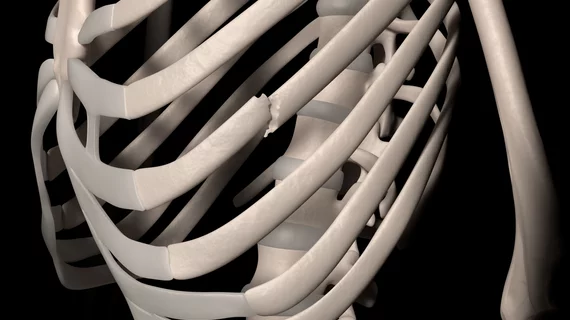Recognizing intimate partner violence injuries on imaging before they escalate
A recent analysis of victims who were hospitalized after enduring intimate partner violence seeks to improve the identification and reporting of injuries these patients sustain.
The study centered on patients who presented to two level 1 trauma center emergency departments for assault-related injuries. The majority of these patients were women (90%), nearly half of whom had reported intimate partner violence (IPV) prior to the study. The research, published in Academic Radiology, describes findings that radiologists should be aware of when interpreting studies of individuals who are suspected to have been the victim of domestic violence.
“Recent studies have shown that radiologists are in a unique position to help raise awareness of potential IPV in clinically unsuspected patients, particularly in a busy ED where IPV-related injuries may be mistaken as accidental trauma,” corresponding author Bharti Khurana, MD, of the Division of Emergency Radiology, Brigham and Women's Hospital in Boston, and co-authors wrote. “IPV victims undergo more imaging studies than the general population. Certain imaging patterns of physical injuries are predictive of IPV.”
Researchers narrowed down their analysis to 29 individuals who self-reported IPV and were hospitalized due to their injuries. Of these patients, 90% were women and 45% reported previous IPV, while some had multiple ED presentations but did not report violence.
“These findings emphasize the importance of early recognition of IPV and timely intervention to prevent further harm to the victim,” the authors cautioned.
In terms of the injuries, 22 of 29 patients sustained blunt force trauma. Injuries to the head and face were observed most frequently on imaging, followed by trauma in the chest (mostly rib fractures), upper extremities and abdomen. Fractures of the upper lumbar spine were also observed. Multiple injuries were common in the subjects, with craniofacial and upper extremity trauma presenting in the same individual most often.
The authors noted that the severity of IPV injuries can escalate over time. Among the patients included in this analysis, 14% had presented to the ED with IPV injuries prior to their hospitalization and intensive care was required for eight patients.
“A heightened awareness of injury patterns can help identify patients at risk for IPV and prevent further harm. When diagnosing IPV, imaging findings should be viewed in conjunction with clinical findings, along with effective screening and high vigilance for IPV in the vulnerable populations,” the authors concluded.
The full results of the study can be viewed in Academic Radiology.
Related trauma imaging content:
PHOTO GALLERY: Radiology images of Ukrainian trauma patients wounded in war
With domestic violence injuries increasing, radiologists must watch for these patterns
Up to one-third of women with forearm fractures may be victims of domestic violence
AI assists radiologists in detecting fractures, improves workflow
References:
Ellen X. Sun, MD, Eric Goralnick, MD, Ali Salim, MD, Bharti Khurana, MD, "Imaging and Non-imaging Findings of Intimate Partner Violence on the Trauma Service: A Retrospective Analysis of Two Level 1 Trauma Centers," Academic Radiology.

